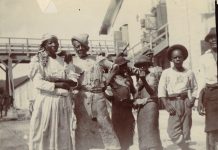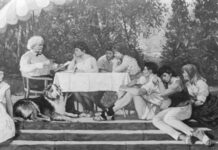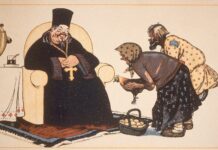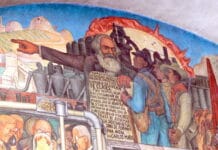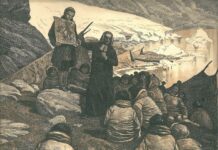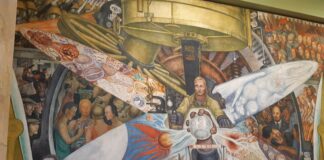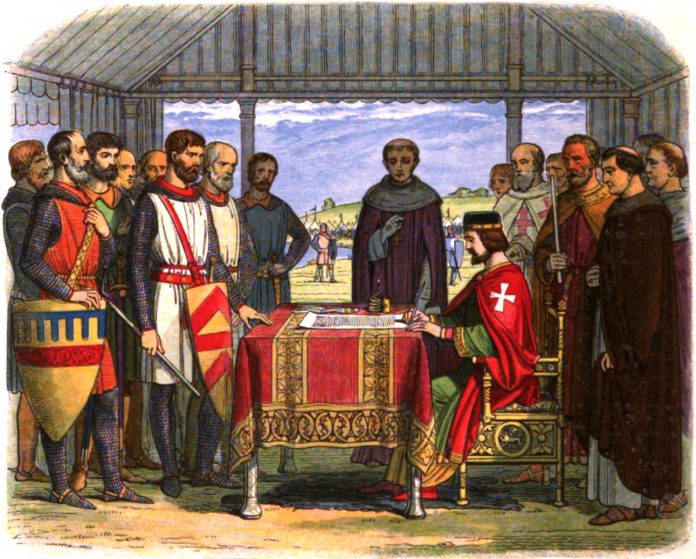
Socialistisk Biblioteks Tidslinje med links til begivenheder og personer i 1215.
Se også Index over personer, organisationer/partier og værker (som bøger, malerier, mm.), steder, begivenheder, mv., der er omtalt på hele Tidslinjen, titler og indhold på emnelisterne osv.
15. juni 1215
Det engelske Magna Carta bliver nedfældet – og 19. juni gyldigt med kongen Johan Uden Lands påtvungne underskrift – der fastslår borgeres (her feudalherrers) ret til oprør mod kongen og er første led i kæden af de senere historiske erklæringer om borgerlige rettigheder/menneskerettigheder.
King John signed the Magna Carta at Runnymede on the 19th June 1215 – The Magna Carta was drawn up in 1215 when King John’s barons forced him to agree to limitations on his power because he had levied heavy taxes to pay for his unsuccessful wars abroad and charged excessively for the exercise of royal justice … Magna Carta lays down the principle that ‘No free man shall be arrested, or imprisoned, or deprived of his property, or outlawed, or exiled or in any way destroyed, nor shall we go against him or send against him, unless by legal judgement of his peers, or by the law of the land’. Source: A History of the World (BBC)

Links:
Magna Carta (Wikipedia.org). Med link til dansk artikel: Magna Carta
The Magna Carta (Marxists Internet Archive; History Section; England). Short intro + the text.
Magna Carta (Spartacus Educational)
Magna Carta (British Library; Treasurs in Full)
Articles:
Law and Marxism: 800 years since Magna Carta. By Ben Gliniecki (In Defence of Marxism, 15 October 2015)
The British Museum’s Magna Carta exhibition: A vital though flawed presentation. By Joe Mount (World Socialist Web Site, 28 August 2015)
Ten reasons why the story of Magna Carta is about rebellion. By Dominic Alexander (Counterfire, June 13, 2015)
The Magna Carta and democratic rights. By Richard Hoffman and Mike Head
(World Socialist Web Site, 15 June 2015). “Magna Carta [was] a major historical event in the social and political development of England and in the emergence of the rule of law against arbitrary power.”
![The Magna Carta (originally known as the Charter of Liberties) of 1215, written in iron gall ink on parchment in medieval Latin, using standard abbreviations of the period, authenticated with the Great Seal of King John. The original wax seal was lost over the centuries.[1] This document is held at the British Library and is identified as "British Library Cotton MS Augustus II.106". One of four known surviving 1215 exemplars of Magna Carta. Original authors were the barons and King John of England. Uploaded by Earthsound. Public Domain.](https://socbib.dk/wp-content/uploads/2013/07/magna-carta-1215-cotton-augustus-1024x647.jpg)
Magna Carta and long history (Weekly Worker, Issue 1051, 26 March 2015). “There are celebrations, but also deflations. Mike Macnair examines the rival interpretations.”
Their Magna Carta and ours (Counterfire, February 8, 2015). “Magna Carta was a small but significiant crack in the edifice of class oppression, which remains to be fully torn down writes Sean Ledwitch.”
Revisiting the Magna Carta. By Noam Chomsky (In These Times, July 7, 2012; online at ZNet)
Magna Carta and May Day : Breaking the chain of command. By Peter Linebaugh (CounterPunch, May 3, 2005)

See also:
Marx’s theory of working-class revolution. By Alan Maass (SocialistWorker.org, October 14, 2010)
Se også på Socialistisk Bibliotek:
Tidslinjen: 26. august 1789, om den franske Menneskerettighedserklæring (Déclaration des droits de l’homme et du citoyen, 1789)




